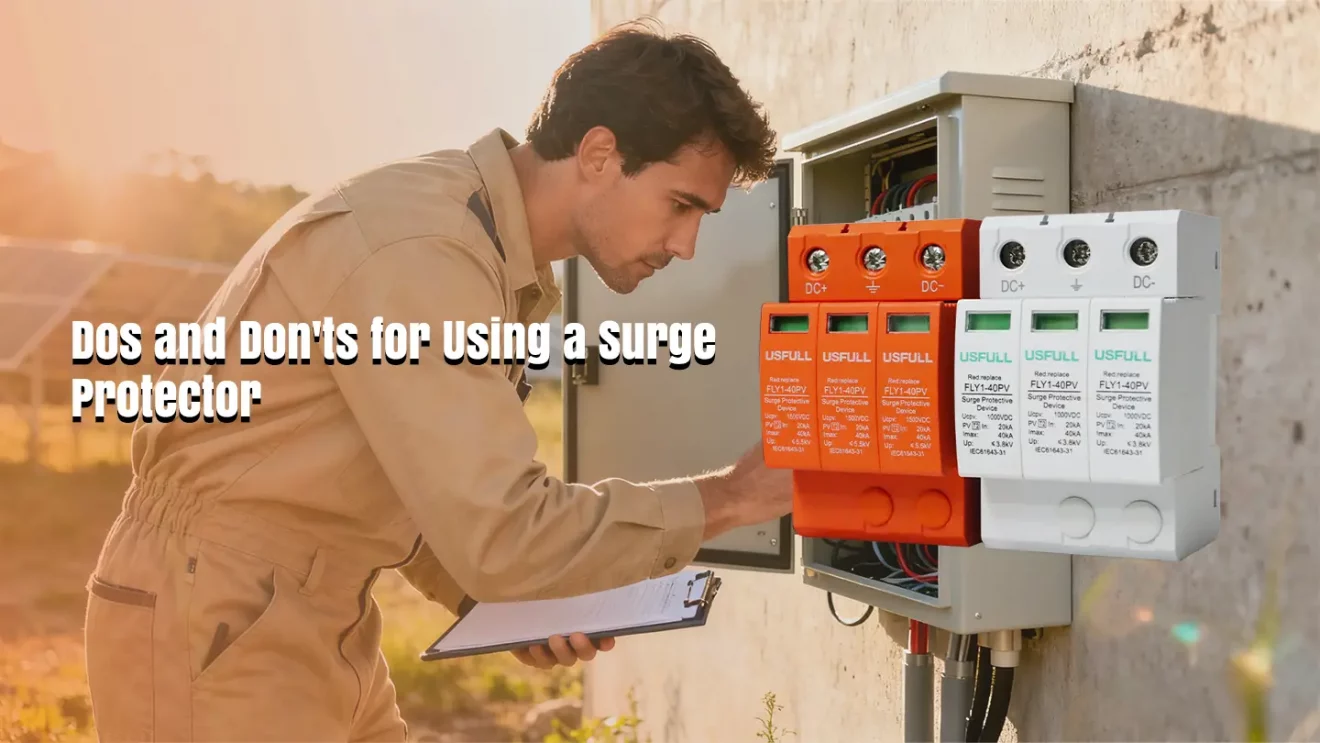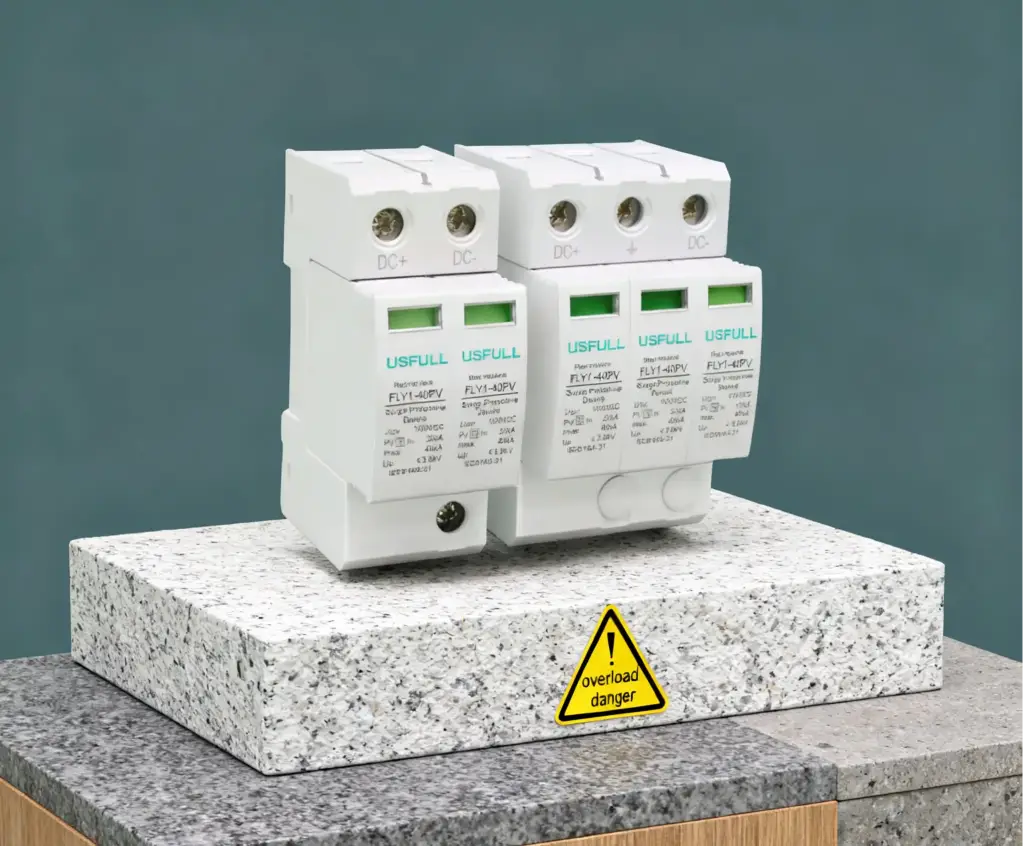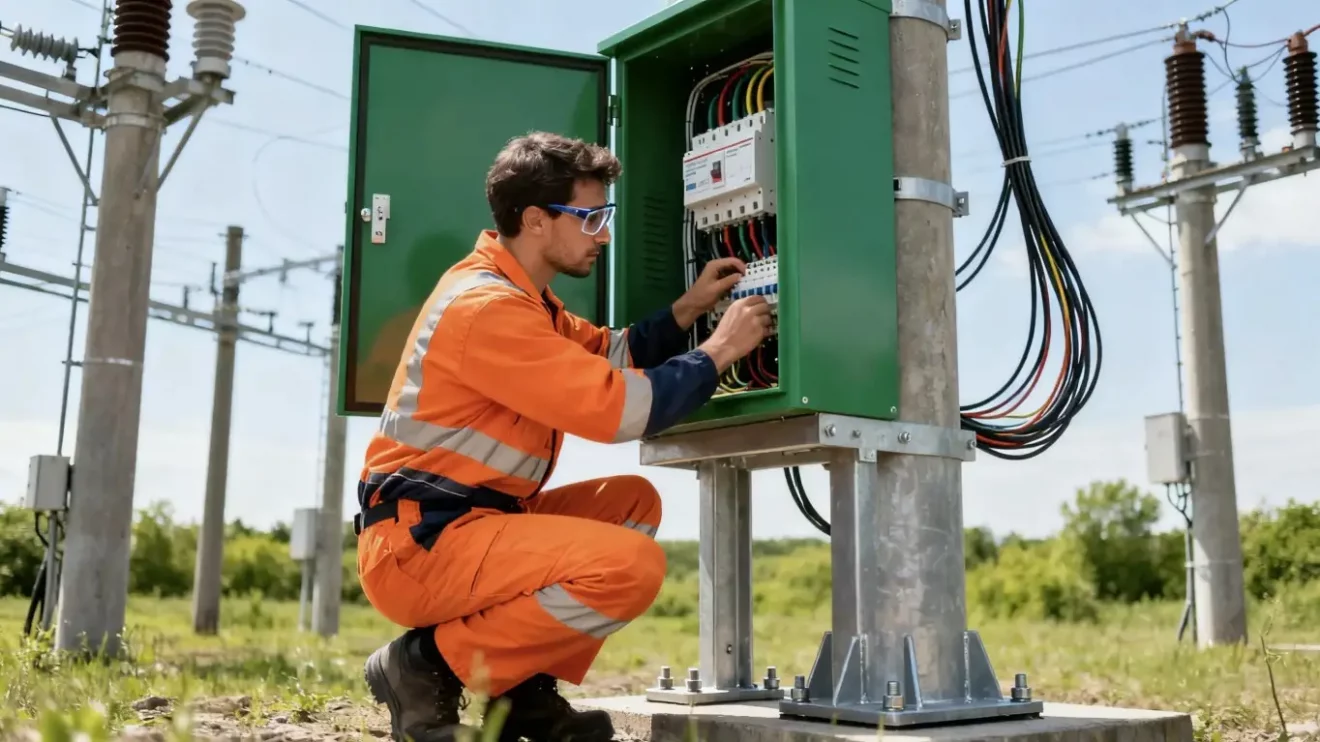Electrical surges silently destroy valuable electronics, leading to downtime, costly repairs, and data loss. The right surge protective device (SPD) is your first line of defense — a simple solution for long-term reliability.
A surge protector or SPD safeguards electrical and solar systems by redirecting excess voltage away from your devices. Using it correctly prevents overloads, fires, and equipment failure while ensuring safe, continuous operation.
Want to make your surge protector last longer and perform better? Let’s explore what to do — and what to avoid.
Don’t: Overload It Like It’s an All-You-Can-Eat Buffet
Your surge protective device (SPD) might seem like it offers endless outlet expansion, but every device has a limit. Overloading your surge protector or solar surge protector by connecting too many devices can cause overheating and tripped circuits. Most SPDs are rated for 15 or 20 amps; exceeding this limit increases fire risk and reduces protection effectiveness.
To prevent overloads, calculate the total amperage of all connected devices and ensure it stays within the SPD’s rating. For example, keep usage around 12 amps on a 15-amp SPD. Using a DC SPD or PV SPD from a trusted surge protective device manufacturer in China like USFULL ensures your protection circuits are built with precision-tested components and safe load capacity.
Don’t Confuse a Surge Protector and Power Strip
A power strip provides additional sockets — but it doesn’t protect your devices from electrical surges. A surge protector or SPD includes specialized circuitry that redirects voltage spikes safely to the ground.
Mixing them up can be dangerous, especially in environments with sensitive electronics or solar systems. If you’re protecting solar inverters, combiner boxes, or industrial control panels, use a certified solar SPD or DC surge protector device designed specifically for energy systems. Always look for certification marks like IEC, CE, or TUV, which guarantee safety and compliance from a reliable surge protective device supplier like USFULL.
Don’t Overload It
Plugging multiple surge protectors into one another — or connecting them to a power-hungry load — is a recipe for overheating and circuit damage. Known as “daisy-chaining,” this practice overwhelms the surge protector’s ability to manage current flow.
Instead, connect high-wattage devices directly to wall outlets or dedicated circuits. Use your SPD only for low-voltage and sensitive devices such as monitoring systems, PLCs, or solar control units. A properly rated DC SPD or solar surge protector from USFULL, a professional surge protective device manufacturer, ensures stable performance even under heavy electrical fluctuations.
Don’t Use It for High-Power Capacity Items
Appliances like microwaves, heaters, or air conditioners draw large currents that exceed a surge protector’s safe limit. These should never share the same outlet with low-voltage or control equipment.
High-power devices cause voltage drops and surges that reduce the lifespan of your SPD. For solar applications, plug in only low-current electronics and monitoring tools to your PV SPD or DC SPD. Use industrial-rated fuses from a reputable fuse supplier to handle high-power circuits separately. USFULL designs its SPDs and fuses to operate together seamlessly — ensuring both surge and overload protection in one integrated system.
Don’t: Let It Feel the Heat
Excessive heat is an SPD’s silent killer. Overheating weakens internal MOVs (metal oxide varistors), reducing surge protection capability.
Always install your surge protective device in a well-ventilated, cool environment away from heaters, direct sunlight, or enclosed cabinets. For solar projects, mount DC SPDs in shaded, airflow-friendly junction boxes. This simple step prevents heat accumulation and ensures longer SPD lifespan. USFULL’s solar SPDs feature robust housings that resist high temperatures and maintain stable performance even under intense sunlight.
Don’t: Let It Spread the Warmth
Certain appliances, like toasters, coffee machines, and space heaters, draw significant current and generate heat. Plugging these into the same SPD as sensitive electronics can cause uneven current distribution and degraded protection.
Always isolate high-power loads from surge-protected circuits. In solar or industrial systems, separate your PV SPD from thermal equipment to maintain consistent voltage management. By doing so, your DC surge protector device works more efficiently, and the overall electrical environment remains stable.
Don’t: Let It Get Wet
Moisture and electricity never mix. If your SPD or surge protector comes into contact with water, it can short-circuit or corrode internally.
For damp or outdoor environments, always use waterproof or IP-rated surge protective devices, such as USFULL solar SPDs. In basements or near sinks, install SPDs alongside GFCI (Ground Fault Circuit Interrupter) outlets for extra safety. As a trusted surge protective device manufacturer in China, USFULL provides durable SPDs with moisture-resistant designs for long-term reliability.
Don’t: Make a Daisy Chain
Connecting one surge protector to another can overload circuits and create serious fire hazards. Daisy-chaining also invalidates many product warranties.
Each SPD should connect directly to a single power source. If more outlets are needed, upgrade to a higher-capacity model or install additional SPDs per system. USFULL’s modular SPD designs make this expansion safe and easy without risking circuit integrity.
Don’t: Double Down
Combining a UPS (Uninterruptible Power Supply) with a surge protector may seem smart — but it’s redundant and potentially harmful.
Most UPS systems already include surge suppression features. Adding a second SPD can interfere with voltage regulation, cause heat buildup, and reduce both units’ efficiency. Always use one protection layer per circuit — preferably a DC SPD or PV SPD built for your system’s specific voltage and load type.
Don’t: Play Tug-of-War with the Cord Like It’s the Dog’s Chew Toy
Yanking the surge protector’s cord or bending it sharply damages insulation and internal wiring.
Always unplug the unit gently from the plug housing, and avoid running cables under carpets or behind heavy furniture. If the SPD’s cord becomes frayed, melted, or discolored, replace it immediately. USFULL SPDs use durable materials and reinforced cords tested for industrial-grade performance and long service life.
Don’t: Attempt a DIY Repair
SPDs are complex electronic protection systems. Once internal components like MOVs or gas discharge tubes degrade, they must be replaced professionally.
Attempting a DIY repair risks electric shock or fire. If the SPD’s indicator light goes out, it means protection has expired. Replace it with a certified DC SPD or solar SPD from USFULL, a trusted surge protective device supplier known for quality and compliance.
Do: Replace Your Surge Protectors Periodically
Every surge protector or SPD has a finite lifespan. Repeated exposure to small surges gradually weakens its capacity to protect.
To maintain safety, inspect your SPDs annually. Replace them if the indicator light is off or after any major lightning event. USFULL’s solar SPDs come with easy visual status indicators, making monitoring simple for technicians. Regular replacement ensures uninterrupted protection for your solar or industrial systems.
Do: Protect Every Electronic Investment
From solar inverters to factory automation equipment, every electronic device benefits from surge protection.
Installing solar SPDs, DC surge protector devices, and certified fuses prevents costly damage and downtime. Partnering with a reliable surge protective device manufacturer in China like USFULL ensures all your components — from PV SPDs to combiner boxes — work together for comprehensive safety and reliability.
Do: Stay Protected, Stay Safe
Following these dos and don’ts ensures your SPDs, solar surge protectors, and DC surge protectors perform effectively.
USFULL is a professional surge protective device manufacturer and fuse supplier with global certifications (CE, IEC, TUV) and exports to 90+ countries. Our commitment is to protect your power systems, enhance performance, and ensure operational safety — wherever you are in the world.





